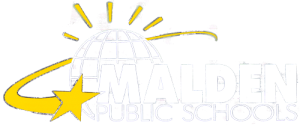Important Update for Families – What a Remote School Day Could Look Like
I hope that this message finds you and your loved ones safe and healthy during these difficult times. When we closed school buildings in March, we had all hoped that we would be in a place where we could welcome back students and families in person in the fall. Despite the decision not to return to a full in-person model, we are committed to making the coming year one filled with meaningful learning for all students. We appreciate your patience as we work through negotiations with the Malden Education Association to ultimately bring our students the educational experiences they deserve. We are grateful for the messages of support, the grace and patience with which you have partnered with us in your children’s education, and your willingness to adapt to the many challenges you have faced while juggling health and safety, work, family, and school. We also acknowledge the feedback that, for many families, the crisis learning of the spring fell short of expectations; we know that we can and must do better as we head into the 2020-2021 school year.
Requirements and guidance from the Department of Elementary and Secondary Education details a learning experience that includes, but is not limited to, the following:
❏ A school calendar that includes 170 student days (with 850 hours of time-on-learning for elementary and 935 hours for secondary schools)
❏ Daily attendance
❏ Remote learning programs that include regular, two-way communication among students, educators, and families to ensure meaningful opportunities to connect regularly with staff
❏ Grades and assessment of students based on the district’s and educator’s performance criteria for students
❏ Access to grade-level instruction in all content areas included in the Massachusetts curriculum frameworks
❏ A plan to deliver services for special education services and English Learner Education
So how do we deliver all of the above in a remote setting? Our approach is to start with what we know – the structure of a school day – and use that structure to inform the creation of learning experiences that all students can access.
We understand that six straight hours of screen time for students is neither healthy nor engaging for our learners, especially our youngest students. But we also know that predictable schedules and routines, along with a balance of live meetings and independent work, create a structure that provides stability for students and the framework needed for families to fully support their child’s learning.
What might a class look like in the world of remote learning? We believe that connection to caring adults is essential for students’ social-emotional health and that it is important for our learners to be able to interact with their teacher and peers throughout the day in various ways. One example of how this could look is to think of a class from the perspective of Launch – Explore – Land:
❏ Launch – The whole class signs onto the platform to be greeted by the teacher and have face-time with peers. During this portion of the class,
the teacher might read a story, ask a probing question to activate students’ thinking about a topic, or teach a new concept.
❏ Explore – During this stage, students step away from the screen (or log off completely) to practice on their own. Or, they might work with a peer
through a set of questions or a mini-project. During this time, the teacher might pull a student or two together for some extra support and guidance. Or, they might use this time to connect with a family using google meet (or an old fashioned phone call) to see how remote learning is going.
❏ Land – In this phase, students will come together at the end of the class to share their experiences.
In another example, students may be engaged in an exploratory class, such as physical education. In this scenario, the teacher might log on for attendance with the larger group, then offer some suggested physical activities that the student could do inside or outside of the home. Again, at the end of class, students might come together to wrap up the lesson and think about how they can stay physically active throughout the day.
Of course, we know that these are just a couple of samples out of many that illustrate how online learning experiences can look. We understand that learners at different stages have a variety of needs that affect the choices we need to make about time on-screen and types of activities. This is a starting point. We know that remote learning is far from perfect and communication between home and school will be critical in the coming weeks as we enter the new school year. We still have some work to do to get this right, but we believe that providing a predictable structure that allows for regular, two-way communication between home and school; a mix of academics and exploratory activities (i.e. music, physical education, art); and a balance of on-screen and off-screen time, will serve as the building blocks for a successful learning experience in the coming weeks.
We also recognize that families need some help being the best educational partners they can be. To that end, we are making efforts to provide dedicated family help-desk assistance (in multiple languages) to assist with technology issues. We are also working tirelessly to build an online hub of resources for families and to develop training sessions on a variety of topics – from how to use Google to tips on staying emotionally healthy during these challenging times. We can’t promise perfection, but we do promise that we will do our very best to serve Malden’s families on every level. We thank you for your continued patience and support as we embark on the next stage of education in Malden for the 2020-21 school year.
Sincerely,
John Oteri
Superintendent

